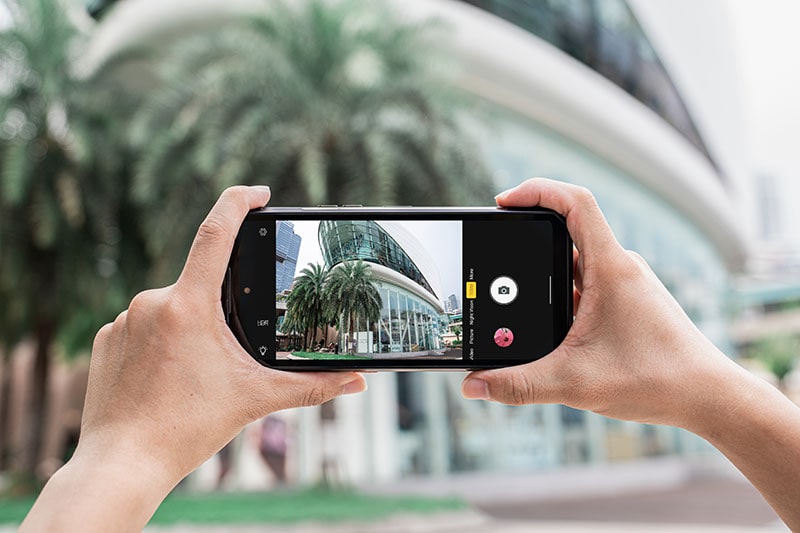Photography's landscape is ever-evolving. Notably emerging from this progression is phase-detection autofocus (PDAF). This nifty technology, a clever autofocus algorithm, measures focus via image phase shift. PDAF takes the cake over conventional autofocus techniques.
In this article, we unravel PDAF - how it operates, where it finds use across diverse camera categories, and its upcoming potential. Stay with us as we delve into an engaging photographic journey!
Phase Detection Autofocus (PDAF) – An Overview
Meet Phase Detection Autofocus (PDAF) - a step up in focusing technology. Puts the traditional contrast detection autofocus behind with its speedier and precise focus capabilities. How does it work? Simple! It splits what the camera sees into doppelganger images, checks for a phase mismatch. The findings are then put to use to regulate lens adjustment - all for that perfect image capture.
Switching gears to smartphones, achieving PDAF is an inside job. Certain pixels from the sensor team up for image forming duties. This paves the way for faster and infallible autofocus - frame by frame. A leap ahead of age-old methods indeed!
In the realm of professional cameras and high-end smartphones, dedicated light sensors take center stage. With a precise aim at various sections of the camera lens, they effortlessly gauge the level of blurriness in an image. This ingenious mechanism enables quick and accurate focusing of the lens - a stark contrast to contrast detection autofocus that often demands repeated back-and-forth movement before settling on the optimal focus point.
PDAF in smartphones
Smartphones smart it up with Phase Detection Autofocus (PDAF). It's a key piece of tech, delivering super-fast and precise focus. Think dedicated light sensors aimed at camera lens spots. Their job? Measure how out-of-focus the image is. Result? The lens gets ultra-speedy, pinpoint, accurate focus.
In smartphones, you find PDAF in "focus pixels." A minor part of the main camera sensor grid pixels specifically for autofocus tasks. An upgrade from classic contrast detection autofocus - speedier, more precision-based. Perfect match for fast-paced subject tracking or abrupt shifts in focus. Adding to its prowess is PDAF’s ability to calculate distances to objects per frame – making moving objects quick to focus on!
PDAF in Consumer Cameras
Phase Detection Autofocus, fondly known as PDAF, isn't just another feature in consumer cameras. It's the lifeline! Boasting an array of dedicated light sensors, each shooting a beam at different lens areas to determine the degree of image blur. In simple terms? A way to tune your lens with speed and precision.
What's unique about PDAF in consumer cameras? It transforms some imaging pixels on the sensor into phase-detecting ones. This helps snap every frame into focus both swiftly and accurately - outdoing traditional cameras. Changing scenes or moving objects - nothing escapes PDAF's sharp gaze, which makes it a favored choice for diverse photography – think sports, wildlife, you name it!
PDAF in Professional Cameras
Professional cameras get a substantial boost with Phase Detection Autofocus (PDAF). It's a leap forward in autofocus tech, dishing out precise focus at lightning speed. Outdoing the old-school contrast detection autofocus. Fast-moving objects or sudden focus shifts – PDAF tames them all with ease.
Here's what PDAF flaunts in professional-grade cameras:
Dual Mode Focusing
Professional cameras typically partner PDAF with the traditional contrast detection autofocus (CDAF). The payoff? Leverage the optimum focus method for each unique situation, leading to smoother and more accurate focus transitions.
Fast and Accurate Focus
PDAF steps in as a major game-changer. With its fast lens-focusing approach for each frame detected, it boldly outperforms conventional ways. A blazoning advantage comes for sports or wildlife photography - rapid focus is a non-negotiable need for sharp image captures!
Measurement of Distance to Objects
The PDAF, adorned by professional cameras, allows for swift distance measurements to objects in every frame. Perfect for a quick focus on moving or changing direction subjects.
Abrupt Changes in Scene Distance
Ideal is what PDAF is when handling instantaneous shifts in focus. Moving the focal point from front-field objects to the rear? Or vice versa? No problem! This attribute comes in handy when capturing images with depth of field variations.
Compatibility with High-End Cameras
Spotting PDAF isn't rare among top-tier cameras. It trumps traditional contrast detection autofocus techniques, promising peak autofocus performance. Such technology now forms an intrinsic feature craved by pro photographers eyeing stellar image quality and unmatched focus efficacy.
Future of PDAF
Phase Detection Autofocus (PDAF) is on the fast track to a luminous future. More advancements and wider integration across diverse camera setups are expected! Here is a sneak peek of what's rolling out:
Elevated Dual Pixel and Quad Pixel Autofocus
Expect your trendy high-tier smartphones to sport an upgrade. With refined Dual, Quad, and All Pixel autofocus technologies making their mark – focusing performance gets a substantial boost!
Hybrid Focusing Systems
PDAF, coupled with other autofocus techs like laser autofocus? It's set to be the next big thing. Think faster, sharper focus - from smartphones to good old cameras.
Improved Autofocus for Video Recording
When it comes to better focus while video recording; credit goes to PDAF. Speedier, smoother focus tracking is on your way – say goodbye to blurry moving objects!














